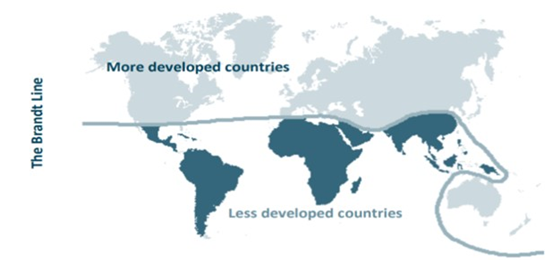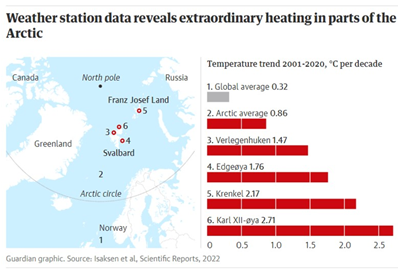10 Mar
India’s ‘ transition to green economy
- India’s ‘ transition to green economy
Why in news? The transition to green and inclusive economies has been long deliberated both at national and global level.
Background: With the country experiencing 314 days of extreme weather events in 2022, and climate change making heatwaves in India 30 times more likely, green growth assumes greater significance.
- Budget 2023 ensured that India is primed for ‘Green Growth’ .
- In a bid to counter the climate threat, India has committed to achieving net zero by 2070; released a low-carbon development strategy; and introduced the concept of ‘LiFE’ (Lifestyle for Environment) to promote responsible consumption. Sovereign Green Bonds, which were introduced in the previous budget as a new avenue of raising finance for green initiatives, recently witnessed a successful maiden auction.
- The government has accelerated the pace of green growth as India is facing the grave reality of depleting natural resources, limited supply of water, minerals, and fossil fuels as it surpasses China to become the most populous country.
Green Economics: A methodology of economics that supports the harmonious interaction between humans and nature and attempts to meet the needs of both simultaneously.
5 Principles of Green economy : “Partners for inclusive Green Economy” has produced the five principle of Green Economy :
- The Well being Principle : enables all people to create and enjoy prosperity.
- Growing wealth that supports well being.
- Opportunities for green and decent livelihoods.
- Built on collective action for public goods.
- Justice principle : Promoting equity within and between generations.
- Avoid elite capture and supports women empowerment.
- Equitable distribution of opportunity and outcome.
- Based on solidarity and social justice.
- Planetary boundary principle : Safeguards, restores and invest in nature
- Using precautionary principle to avoid loss of natural capital and breaching ecological limits.
- Invest in protecting, growing and restoring biodiversity, soil, water, air, and natural systems.
- Efficiency and Sufficiency principle : Supporting sustainable consumption and production .
- Global shift to limit consumption of natural resources to sustainable level.
- Employ polluter pays principle or benefits to be accrued to those delivering inclusive green outcomes.
- Good Governance principle : Integrated , accountable and resilient institutions.
- Requires public participation , transparency and social dialogue.
- Devolved decision making
- Serve the interest of society.
Why move to a Green Economy:
The green economy is more than just environmental in scope; it is also about development and the economy. A green economy has following benefits:
- Environmental benefits
- Address global challenges such as climate change , loss of biodiversity and desertification.
- Contributes to efforts at national and regional level to address local pollution of air, water and soil.
- Economic benefits:
- Opening up new export markets . New markets for biofuels , and for renewable energy technologies such as solar panels, wind turbines.
- Helps to maintain existing market share.
- Increased productivity , and increased commodity and agricultural
- Improved energy security
A green economy adopts a more sustainable path by increasing the share of its GDP to renewable energies, clean transportation, clean technologies, green buildings, waste management, water services, sustainable agriculture and forestry. It also reduces the energy use per unit of production, as well as carbon emissions per unit of GDP, while minimizing wasteful
consumption in various sectors of the economy

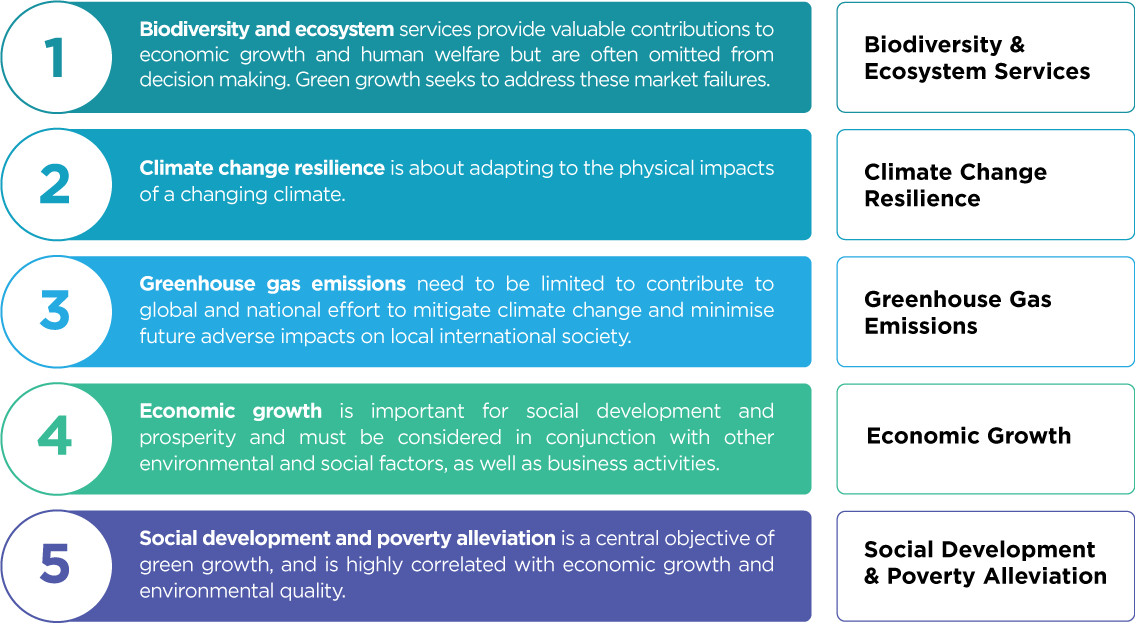
Potential hurdles for India in achieving Green Economy
- The larger perception is that environmental protection comes at the cost of economic growth and development. Open cast mining in Odisha was stopped for environmental protection.
- Financial markets for green investments are at a nascent stage and systems to direct funding towards green and responsible investments are inadequate. Eg Investors are reluctant to invest in green bonds because of their credit rating below AAA.
- Green technology is generally thought of as unreliable and not cost-competitive. Renewable energy like Solar is not available round the clock and initial cost is high.
- The thinking that India cannot afford to pollute now, clean up later‘ has still not gained mainstream acceptance.
- Greening the economy is not fully recognized as a tool to achieve social prosperity and environmental sustainability.
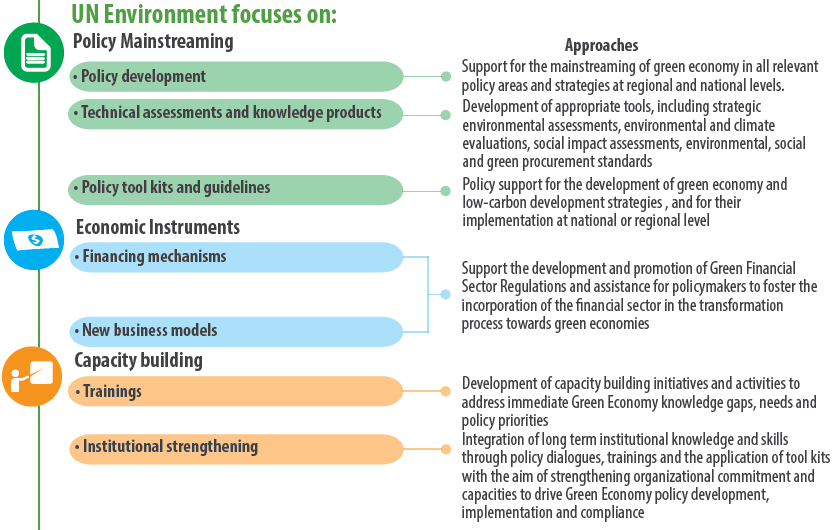
Finland as a Green Economy
Finland has a strong reputation as a leader in environmental policy and sustainable development. It is the only country, close to reaching many of the SDGs related to social and economic sustainability. It is a forerunner to become the world’s first green economy by 2035. Roughly 90% of power generation is already carbon neutral and is only European country with access to all minerals needed for batteries.
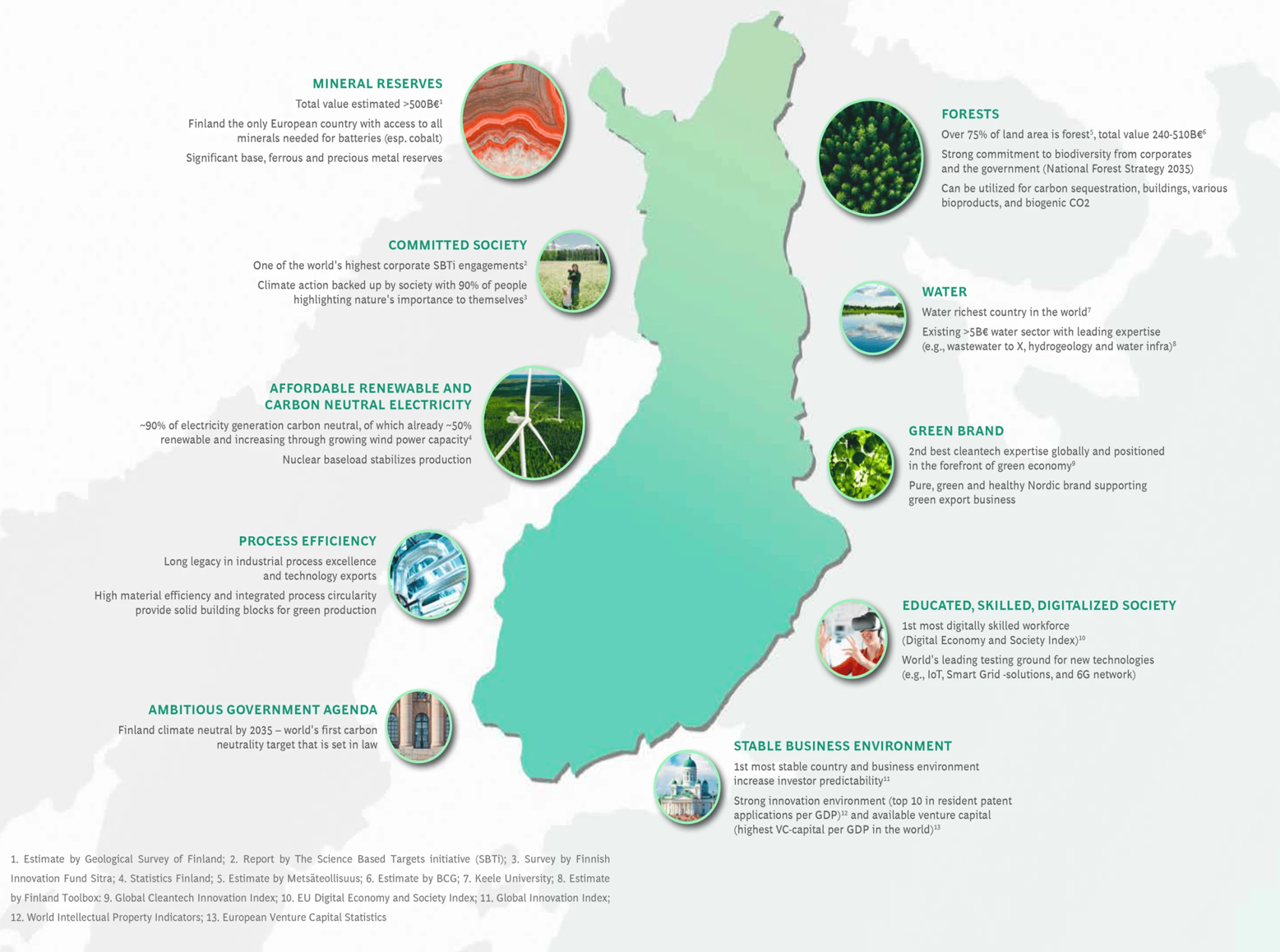
Greening Economic Sectors in India:
Five high-impact sectors key to the Green Economy in India are Agriculture, Construction, Power, Manufacturing, Transport and Tourism.
- Agriculture: Sikkim was named the first fully organic state in the Several measures have been taken by the government including credit access, climate resilient seeds and technological interventions.
- Construction: The construction sector represents 30% of Indian electricity consumption and has a high material India ranks third in the top Ten Countries for LEED (Leadership for energy and environmental design). Further, green buildings is projected to grow 20% in the country. Fly ash utilization in the construction sector has witnessed a steady up upward trend.
- Energy: The Ministry of New and Renewable Energy targets to set up renewable energy capacities to the tune of 175 GW by 2022 of which about 100 GW is planned for solar,60 for wind and other for hydro,
- Manufacturing: Green manufacturing in India is still at the take–off While there has been significant policy development and adoption by the manufacturing industry in the area of green energy, there is substantial scope on both the policy front and its adoption in the areas of green products and green processes.
- Transportation: There is the growth-of on-demand transportation and carpooling The Ministry of Road Transport and Highways signed a pact with Transport for London to revamp the public transportation in India.
Criticism of Green Economics
- Critics claim that green economics' attempts to decouple economic growth from environmental destruction have not been very successful. Most economic growth has occurred on the back of non-renewable technologies and energy sources. Eg. Bulk of electricity in India is produced from coal
- Emphasis on green jobs as a social justice solution is also fallacious. Raw material for green energy in several cases comes from rare earth minerals mined in inhospitable conditions by workers who are paid cheaply. Example is electric cars, whose batteries may be made from raw materials mined from fragile rainforests.
- Another criticism of green economics is that it is focused on a technological approach to solutions and, consequently, its market is dominated by companies with access to the technology.
Strategies for Achieving a Green Economy
- Buildings:An energy audit may significantly cut your building's carbon footprint and energy expenditures.
- Fisheries: By promoting sustainable fishing methods, we can prevent overfishing. Select seafood that has been caught responsibly.
- Forestry: Nearly 20% of the world's greenhouse gas emissions are caused by deforestation.Reduce the need for paper items by using electronic files.Ahealthy environment and sustainable livelihoods are supported when you purchase certified sustainable forest products.
- Transportation:Using public transportation or carpooling has a positive influence on the environment, economy, and community.
- Short-distance travel by bike or on foot is healthy for you and the environment.
- It promotes Green Economyin the transportation industry when you choose alternate modes of transportation.
- Water:Making simple efforts to utilize water responsibly will help protect this priceless resource. .
- Turn off the faucet while not in use. A Green Economymust prioritize resource efficiency, and one of our most valuable resources is water.
- Agriculture:In order to ensure that we can feed everyone, it is time to encourage sustainable agriculture.
- Create your own food garden and visit your neighborhood farmers' market.
- The support of a green economyfor agriculture is communicated to farmers when you purchase locally sourced, organic, and sustainable food items.
- Energy: Encourage the development ofclean, renewable energy sources by patronizing companies and buying their goods, or by making their own investments.
- Consider strategies to increase personal energy efficiency while we try to make the switch to renewable energy.
- Waste: Composting food scraps and recycling relevant items lowers the strain on our natural resources.
- The development of clean, renewable energy sourcessuch as solar, wind, and tidal will help the green economy.
Conclusion:
The unsustainable way in which our natural resources are valued, used and managed is the most fundamental problem and there is need to operate within the ‘ planetary boundaries‘. However, these national pathways can be informed and assisted by an international framework of rules, best practices and actors. Countries like Japan, South Korea, China and Germany have already positioned themselves as green technology leaders and India should not be the perennial technology buyer. It can be concluded that there is need for a policy shift for green reforms to enable India to achieve sustained and sustainable development.
TURKEY SYRIA EARTHQUAKE
Why in news? Recently, a 7.8 magnitude earthquake struck south-east Turkey and northern Syria , killing at least 2,300 people and wounding thousands.
Background:
- Turkey's location, converging on the three tectonic plates, has resulted in repeated major earthquakes over the past century.
- In December 1939, a 7.8 magnitude quake struck near the city of Erzincan in eastern Turkey, killing over 30,000 people.
- According to the country's Disaster and Emergency Management Authority (AFAD), Turkey recorded over 22,000 earthquakes in 2022.
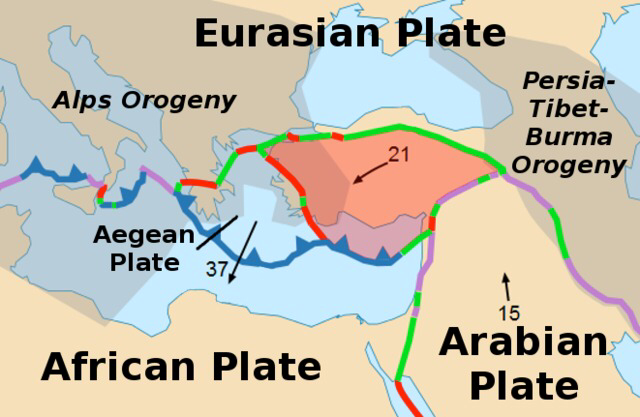
What Makes Turkey A Hotbed Of Seismic Activity?
- It is located on the Anatolian tectonic plate, which is wedged between the Eurasian and African plates.
- One fault line, the North Anatolian fault (NAF) line, the meeting point of the Eurasian and Anatolian tectonic plates is known to be“particularly devastating”.
- The NAF, one of the best-understood fault systems in the world, stretches from the south of Istanbul to northeastern Turkey, and has caused catastrophic earthquakes in the past.
- In 1999 itself it caused two earthquakes of 7.4 and 7.0 magnitude each in Gölcük and Düzce provinces. Almost 18,000 people died and more than 45,000 were injured.
- The East Anatolian fault line, the tectonic boundary between theAnatolian Plate and the northward-moving Arabian Plate.
- It runs 650 kilometers from eastern Turkey and into the Mediterranean. In addition to this, the Aegean Sea Plate, located in the eastern Mediterranean Sea under southern Greece and western Turkey, is also a source of seismic activity in the region.
- According to an estimate, almost 95% of the country’s land mass is prone to earthquakes, while about a third of the country is at high risk, including the areas around the major cities ofIstanbul and Izmir and the region of East Anatolia.

Geological implications:
- In the coastal city of Iskenderun, there appears to have subsidence , which resulted in flooding.
- The quake has left many hillsides around the country at serious risk of land slip.
- Liquefaction of soft sediments along the coastal areas.
Economic impact of Turkey earthquake:
- High inflation , collapsing stock market and a devastated agricultural sector.
- Nearly 8000 building , roads and sea ports were destroyed , limiting the supply chain for exports.
- Undervaluation of Lira ( currency of Turkey ) , making it difficult for Turkey to bring in foreign investors.
- Industries are at higher risk, particularly agriculture and industrial sectors.
- Turkey can lose upto 1 % of GDP with some ripple effect throughout world economy, as Turkey is leading provider of several fruits including apricots.
- The devastation has hit tourism industry as tourist spots are no longer accessible.
- Turkey between the Black Sea and the Mediterranean Sea, serves as an important waterway for global shipping. "The earthquake will undoubtedly disturb normal shipping,
- Syrian refugees living in poverty in southern Turkey, have been abandoned to their fate after the earthquake.
Geopolitical ramifications:
- Earthquake relief work may distract Turkey from his role as a mediator between Russia and Ukraine.
- Infrastructure damage has led disruptions to energy supplies from Turkey and may significantly impact European energy markets.
- Such strong earthquakes could force others to rethink the possibility of the instability of seismic zones in Turkey and may affect the directions of future energy channels or gas pipelines in the long run.
India’s aid to Turkey
- Under Operation Dost, India has sent search and rescue teams, a field hospital, materials, medicines, and equipment to Turkey and Syria.
- The NDRF is working to extricate live victims from under the rubble and providing first-aid to the injured.
- Field hospital is providing fully functional operation theatre, and facilities such as X-rays, and ventilators among others.
- NDRF is using chip and stone cutters to breach fallen concrete slabs and other infrastructure and has deep radars that pick up feeble sounds like the heartbeat or sound of a person.
- India is also sending aid to Syria , despite it is under US sanctions. ndia is following the G20 mantra of ‘One Earth, One Family, One Future’.
Conclusion:
Short-term solutions – rebuilding the same style of flawed housing and infrastructure – will only increase the chance of future tragedies. Redesigning their built environment to live with seismic risk, and engaging the whole population of Turkey in an ongoing experiment to create a society that recognizes earthquakes as a continuing threat that can be managed.
HOLISTIC ACTION FOR URBAN RIVERS
Why in news ? Recently, the declaration was made during a two-day conference DHARA, which stands for Driving Holistic Action for Urban Rivers,
Background:
Status of urban rivers:
- About 66% of stretches monitored in 290 rivers have high organic pollution, measured in terms of biological oxygen demand (BOD). The decline in the quantity and quality of water flow has reduced the productivity of many terrestrial, aquatic, and coastal zone ecosystems and led to loss of biodiversity, report by Central pollution control board.
- The pollution load on rivers has been rising constantly. The report says over 370 major towns and cities are contributing to river pollution as the country has the wherewithal to treat only 30% of its urban water waste.
- Yamuna is not the lone black spot. The Mithi in Mumbai is treading the same path with organic pollution increasing from Powai to Dharavi while the Hindon river is getting the same treatment from industrial waste between Saharanpur and Ghaziabad.
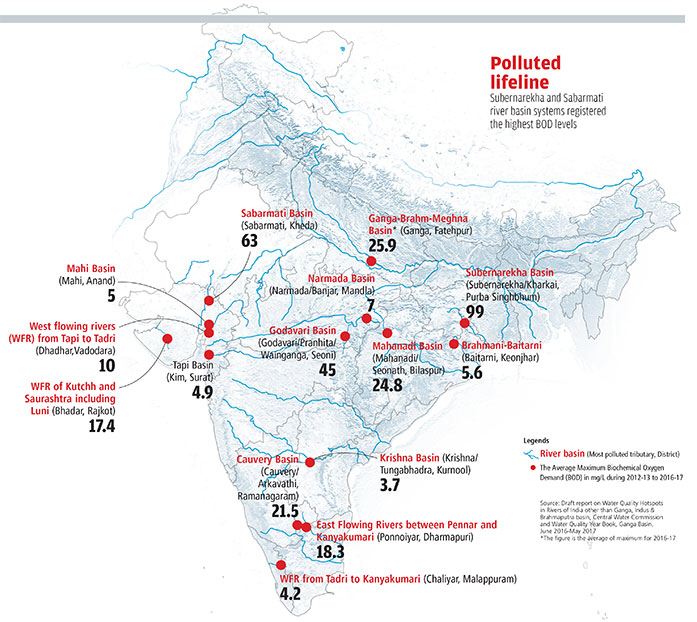
Causes of poor state of urban rivers:
- Inadequate sewage treatment : Discharge of untreated wastewater is one of the main causes . There is either not sufficient treatment capacity or capacity is under-utilised in the states.
- Human dumping : Urban household produces garbage in the form of papers, plastic bottles, glass, rubber, aluminium and also waste food. Some of these waste deposits take up to 200 years to decompose, eventually causing pollution and harming creatures :
- Industrial processing : Industrial waste includes toxic chemicals such as mercury, lead, asbestos, sulphur and nitrates. Most industries lack a proper waste management system. These waste chemical change the color of the water, cause eutrophication and change the water temperature and posing a serious hazard to humans, animals, and plants.
- Run off : Urban rivers are also contaminated by rain runofffrom oil-slick roads , construction, mining and dump sites or landfills .
- Water hyacinth choking river: Vast stretches of the Sabarmati River in Ahmedabad is covered by this invasive species. Pollution and lack of freshwater are behind the sudden spread.
- Mining and Quarrying : Active and abandoned mines can cause problems for river water quality due to exposed pollutants, such as heavy metals and acidic water.
- Cremation & Last Rites : Cremation grounds in urban India are located on the banks of rivers. Varanasi is one such place with cremation grounds located right on banks of river Ganga .
Possible Consequences of River Water Pollution
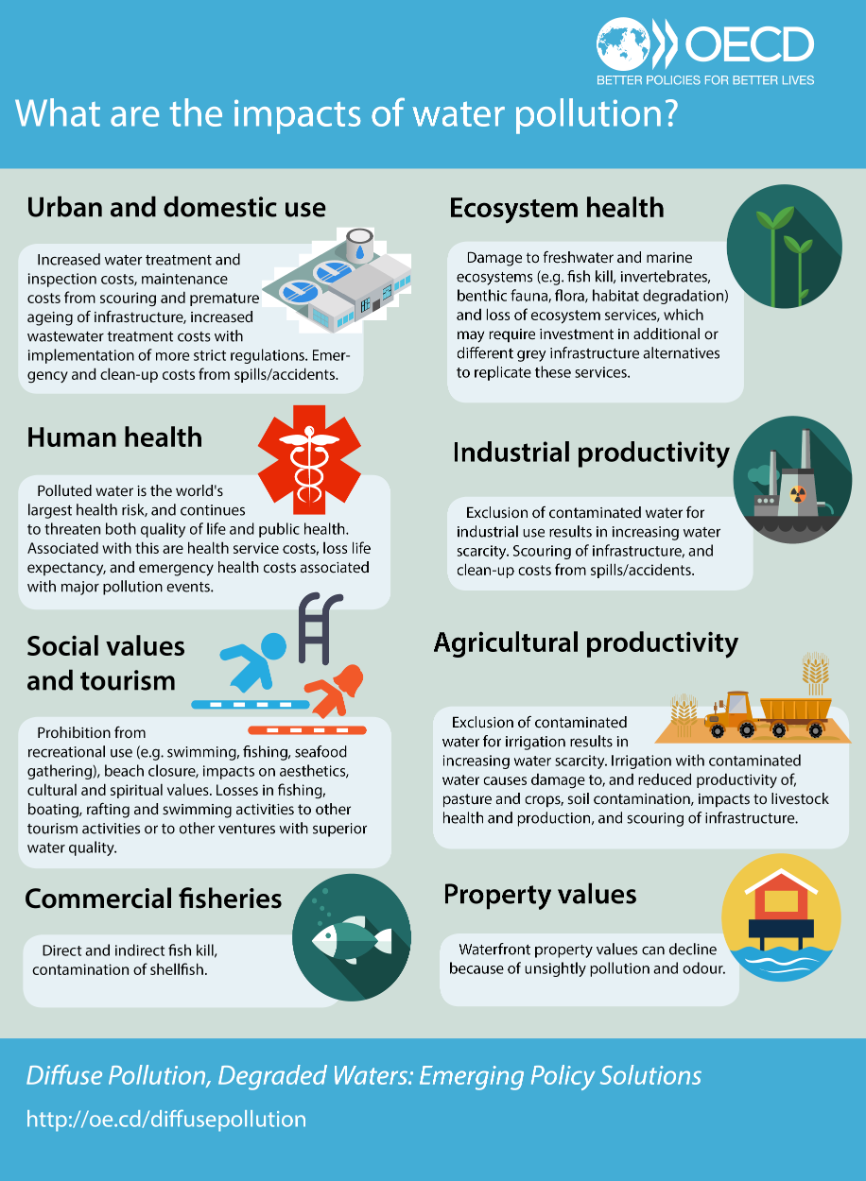
- Impact on flora and fauna : River contamination threatens biospheres and nature conservation areas. Migratory birds like Flamingos ,shun these rivers, and hence, they can face extinction.
- Loss of Livelihood : Fish from polluted rivers is found to be high in mercury, lead and cadmium and hence, unfit for human consumption. Edible fish is contaminated with Salmonella, Shigella and other harmful microbes found in human faeces and leading to loss of livelihood for fisherman.
- Disease & Health burden : Consuming polluted water can cause cancer, depletion of calcium from bones of humans and animals (Osteoporosis), loss of vision, impotence among men, sterility among women, Tuberculosis and other severe medical conditions.
- Loss of export revenue : Freshwater fish varieties including the famous Hilsa, Rohu, Katla and prawns from Indian rivers once had a high demand in foreign countries, especially in the Middle East. Presently , several countries have banned imports of freshwater fish from India, including farmed varieties.
Challenges identified in urban river pollution management
- Dense cluster of industries and surrounding slums discharging their semi-treated/untreated industrial/domestic wastewater into the urban river watershed,
- Lack of effective coordination amongst stakeholder organisations,
- Lack of awareness on usefulness of multivariate statistical analysis and Geographic Information Systems (GIS) technology in spatiotemporal river monitoring.
- Balkanization of the environmental management authorities, municipal bodies and other water regulatory stakeholder authorities who are obligated to collaborate and coordinate with each other to manage water quality and keep rivers pristine
- Data- and resource constraint situation due to unavailability of consistent and reliable river data.
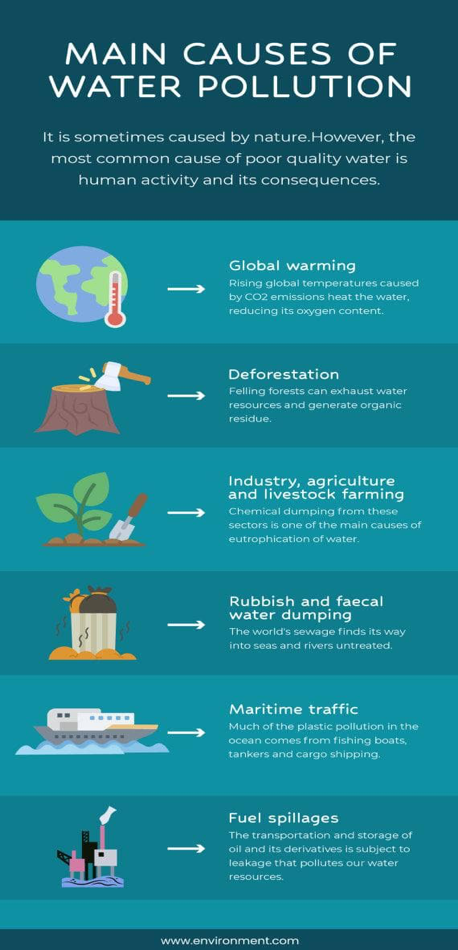
Way forward:
- Autonomous Agency: Urgent need to set up an autonomous agency with environmental experts who are familiar with the river rather than bureaucrats.
- Improving Flow: Lesser storage will improve water-flow downstream restoring the self-purifying capabilities of the It may raise the cost of the projects but should be done for long-term preservation of the river.
Decentralisation: River cleaning programmes are centralized, largely driven by the Union Government. Greater involvement of State and Local Governments (bottom-up approach) can help in better implementation.
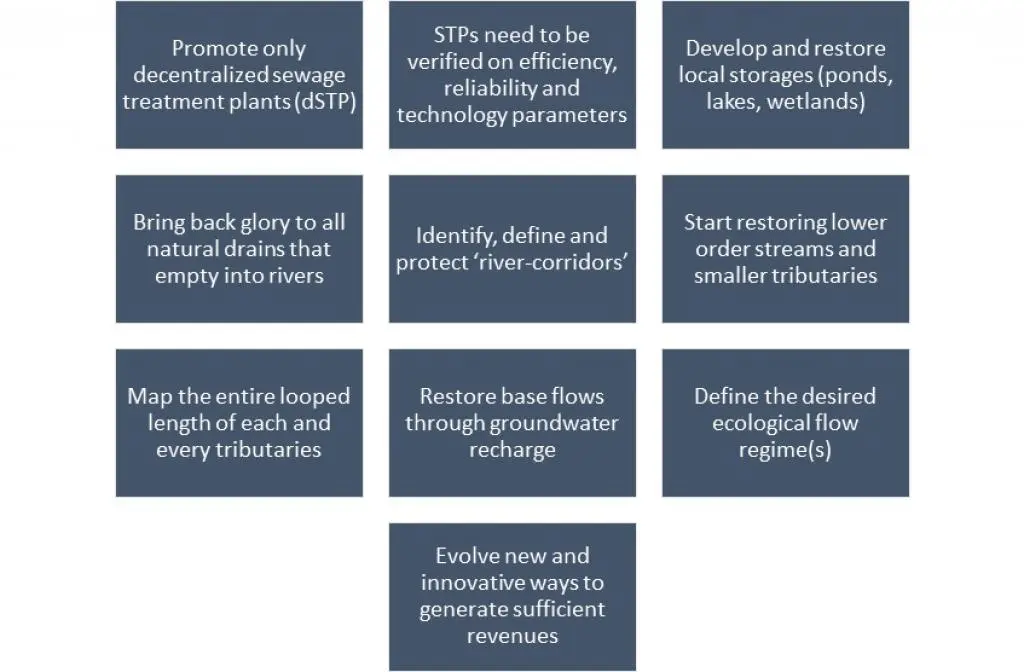
THWAITES GLACIER
Thwaites Glacier, nicknamed the Doomsday Glacier is an unusually broad and vast Antarctic glacier flowing into Pine Island Bay. Because of its size (1.9 lakh square km), it contains enough water to raise the world sea level by more than half a meter. The new research suggests that even low amounts of melting can potentially push Thwaites glacier further along the path toward eventual disappearance.

SKYGLOW
It is an increase in the apparent brightness of the night sky that can serve to reduce visibility for astronomical observation. Sky glow occurs when artificial light which shines upwards, reflects off clouds and atmospheric particles such as dust and water, causing a ‘scattering’ effect. It can be caused by any artificial lighting such as street lamps, flood lights, security lighting, illuminated buildings, lights left on in office buildings at night, airport landing lights and so on. Recently, a new study has found that non-natural light had increased the brightness of Skyglow, by 9.2-10% every year between 2011 and 2022 with significant ecological, health and cultural implications.
Carbonaceous chondrites
Carbonaceous chondrites are a class of chondritic meteorites that includes the most primitive known meteorites. carbonaceous chondrite, a diverse class of chondrites (one of the two divisions of stony meteorites), important because of the insights they provide into the early history of the solar system. They are non-differentiated meteorites, a legacy fossil from the creation of planetesimals. These provide us not only with information about the processes of aggregation of the earliest building blocks of the planets, but also about everything which occurred in their interiors shortly after their formation.
STRATOSPHERIC AEROSOL INJECTION
Stratospheric aerosol injection is a solar radiation management geoengineering or climate engineering approach that uses tiny reflective particles or aerosols to reflect sunlight into space in order to cool the planet and reverse or stop Global Warming. The approach involves spraying reflective sulfate aerosol particles into the stratosphere with high altitude airplanes, tethered balloons, high-altitude blimps or artillery.
CLARION CLIPPERTON ZONE
The Clipperton Fracture Zone, also known as the Clarion-Clipperton Zone, is a geological submarine fracture zone of the Pacific Ocean. It spans 4.5 million square kilometers (1.7 million square miles) between Hawaii and Mexico, an abyssal plain as wide as the continental United States and punctuated by seamounts. Lying atop the muddy bottom or embedded just beneath it are trillions of potato-size polymetallic nodules. These rock like deposits contain nickel, manganese, copper, zinc, cobalt, and other minerals.
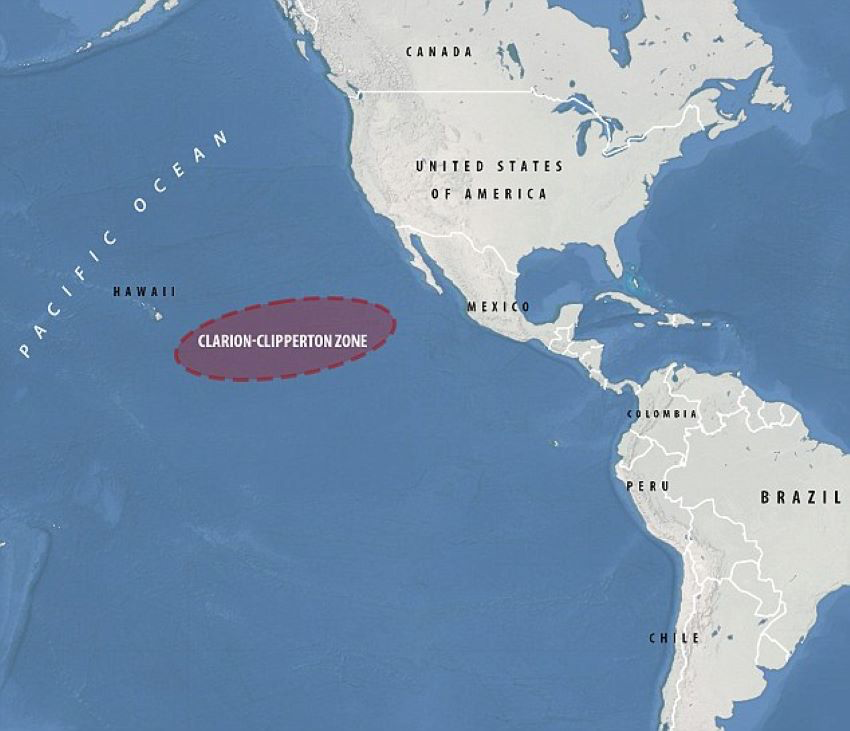
agri tourism : Baramati district in Maharashtra
- Agri-tourism is a business venture located on a working farm, ranch, or agricultural enterprise that provides an “experience” for visitors while generating supplemental income for the owner.
- The study was conducted in Baramati District, of Maharashtra using a field survey and some group discussions with farmers and respective state officials of these
- The benefits of agritourism development are manifold & are as follows:-
- Employment opportunities to the farmers including farm family members and youth.
- Additional income source for the farmers to protest against income fluctuation.
- Cultural transformation between urban and rural people including social moral values
- Farmers can improve their standard of living due to the contacts with urban people.
- Benefits to the urban people; they can understand about the rural life and know about the agricultural activities
- It supports for rural and agricultural development process.Help to the reduce burden on the other traditional tourist centres.
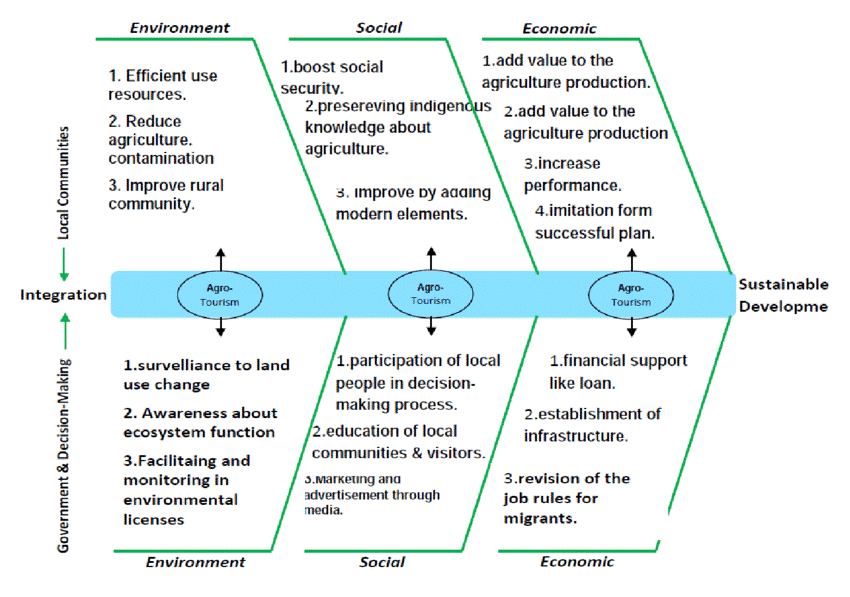
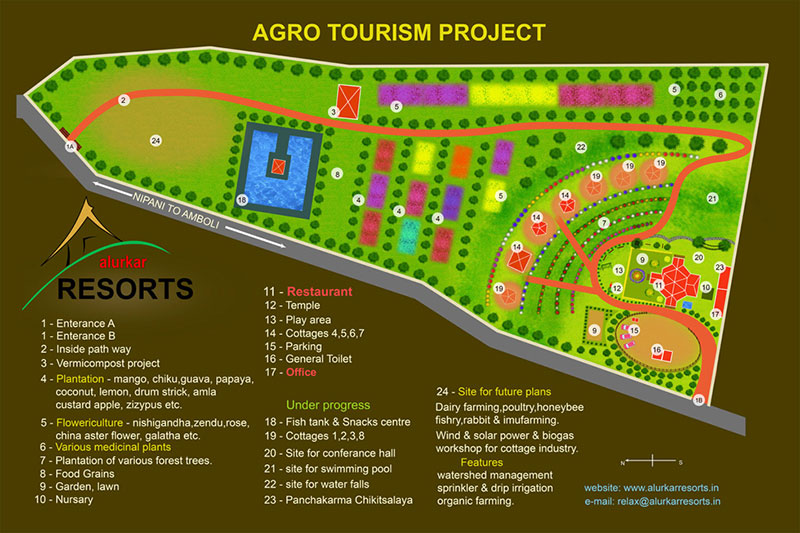
Map
|
1. Sinthan top |
It is a mountain pass, located between South Kashmir's Breng Valley in Anantnag district and Kishtwar district of Chenab Valley in the Indian union territory of Jammu and Kashmir. Recently for the first time, the road to Sinthan Top has been opened in the month of February with an aim to promote tourism in Jammu and Kashmir. |
|
2. Kappad |
Kappad, locally known as Kappakadavu , is a beach and village in the district Kozhikode, Kerala, India. The beach is accorded with Blue Flag certification , considered as one of the cleanest beaches in the world. |
|
3. Darma valley: |
Darma is an Himalayan valley situated in the Pithoragarh district of Uttarakhand. The valley is formed by the Darma River. Darma River starts near Dawe village on the Sino-Indian border and flows southwards. Recently , snow leopard has been sighted for the first time in the Darma valley in Uttarakhand's Pithoragarh district. |
|
4. Kolukkumatii: |
Kolukkumalai is a small village/hamlet in Bodinayakanur Taluk in the Theni district of the Indian state of Tamil Nadu. It is home to the highest tea plantations in the world with the tea grown here possessing a special flavour and freshness because of the high altitude. |
|
5. Thamirabarani river: |
It is a perennial river that originates from the Agastyarkoodam peak of Pothigai hills of the Western Ghats. It flows through Tirunelveli and Thoothukudi districts of the Tamil Nadu state of southern India into the Gulf of Mannar. Recently , district administration of Tirunelveli has planned to restore the Thamirabarani River. |
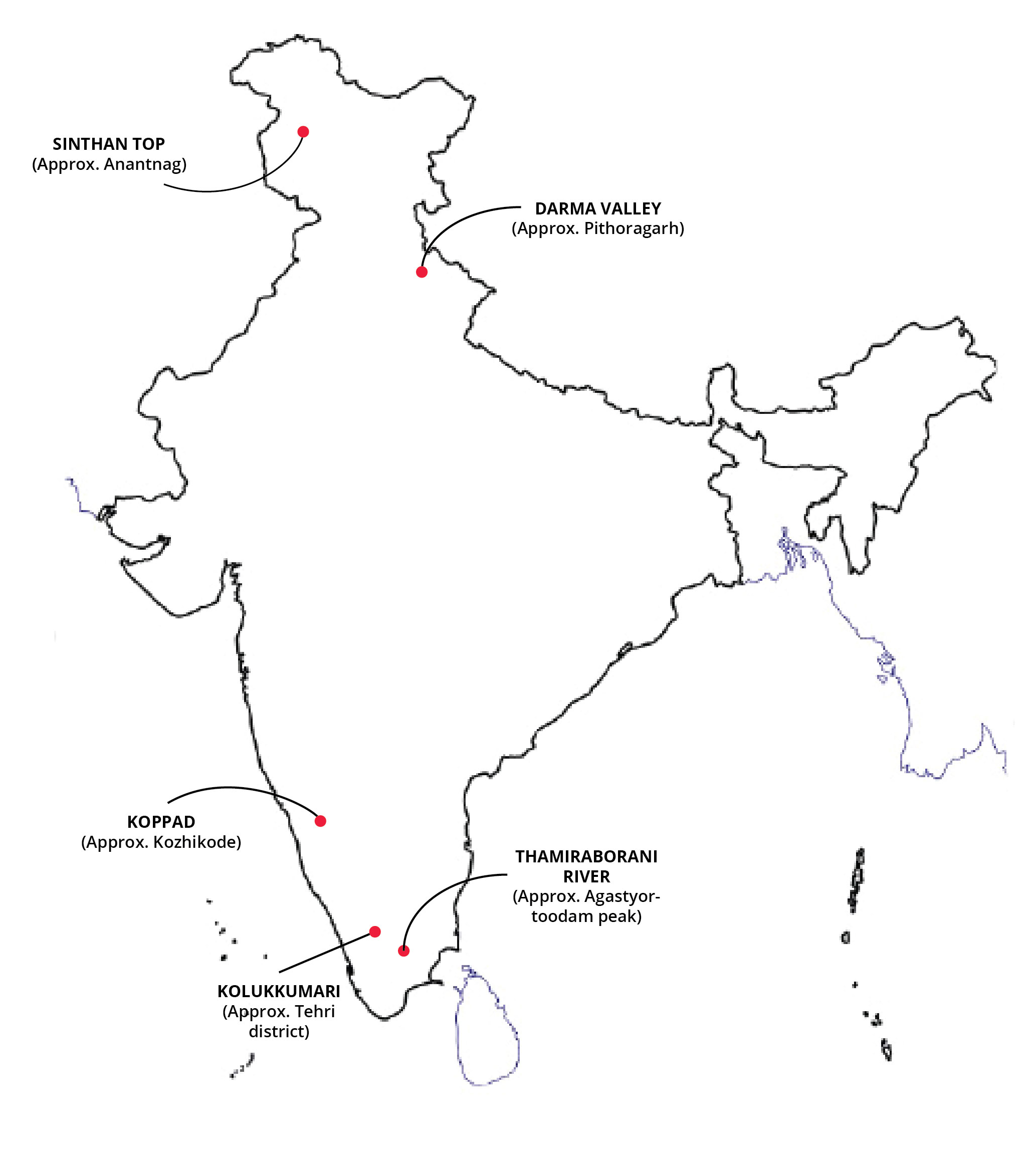
KOSMOS MCQs
1. With reference to Global Biofuels Alliance (GBA), consider the following statements:
- The alliance has created a “viability gap funding “ for 2 G ethanol bio refineries among member states.
- The alliance shall work in collaboration with Global Bioenergy Partnership.
Which of the above mentioned statements is / are correct?
- Only 1
- Only 2
- Both 1 and 2
- Neither 1 nor 2
2. Consider the following statements regarding Thwaites Glacier:
- It is the large outlet and widest glacier of the world located in West Greenland
- It is a UNESCO World heritage Site because of its contribution in scientific understanding of anthropogenic climate change.
Which of the above mentioned statements is / are correct?
- Only 1
- Only 2
- Both 1 and 2
- Neither 1 nor 2
3. With reference to TRAFFIC, consider the following statements :
- It was drafted as a result of a resolution adopted in 1963 at a meeting of members of IUCN.
- It’s mission is to ensure that trade in wild plants and animals is not a threat to the conservation of nature.
Which of the above mentioned statements is / are correct?
- Only 1
- Only 2
- Both 1 and 2
- Neither 1 nor 2
4. Consider the following statements regarding Purse Seine fishing:
- It is a non-selective fishing method that captures everything that it surrounds.
- This mode of fishing per se has resulted in serious resource depletion so far.
- It has no contact with the seabed and can have low levels of by catch.
Which of the above mentioned statements is/ are incorrect?
- Only 2
- Only 1 and 3
- Only 3
- None of the above
5. Consider the following:
- Shinku la Tunnel : Uttarakhand
- Depsang Plains : Ladakh
- Darma Valley : Himachal Pradesh
Which of the above mentioned pairs are correctly matched?
- Only I pair
- Only 2 pairs
- Only 3 pairs
- None of the pairs
6. Consider the following statements regarding Skyglow:
- It is an omnipresent sheet of light across the night sky in and around cities.
- It is the common aspect of light pollution and has its source from the sunlight reflected off the moon and earth.
Which of the above mentioned statements is / are correct?
- Only 1
- Only 2
- Both 1 and 2
- Neither 1 nor 2
7. With reference to Glacial Crevasses , consider the following statements:
- It is a long segment of a glacier formed due to the stripping of soft strata from hard strata.
- It is a deep , wedge shaped opening in a moving mass of ice.
Which of the above mentioned statements is/ are correct?
- Only 1
- Only 2
- Both 1 and 2
- Neither 1 nor 2
8. Consider the following:
- Mahul leaves
- Wild Mushroom
- Cashew Kernel
Which of the above mentioned in the list of Minor Forest Produce are included under the Mechanism for Marketing of Minor Forest Produce through Minimum Support Price scheme?
- Only 1
- Only 2
- Only 1 and 3
- 1, 2 and 3
9. Tarawa declaration, recently in news is associated with :
- Strategies for achieving Sustainable Development.
- Legal frameworks to be established by governments in the area of water.
- Address pollutants that cause acidification and ground-level ozone.
- Protection of Marine Animal resources
10. Consider the following statements regarding Rhododendrons:
- Rhododendrons have deep and thick taproots.
- It produces nectar in huge quantities
- Some plants of Rhododendron are evergreen while others are deciduous in nature.
Which of the above mentioned statements is/ are correct?
- 1 and 2
- 2 and 3
- 1 and 3
- All of the above
11. Consider the following statements regarding Stratospheric Aerosol Injection :
- It is a geo engineering technique to limit rising temperatures causing climate change.
- It also addresses the issues of rising carbon dioxide emissions.
Which of the above mentioned statements is/ are correct?
- Only 1
- Only 2
- Both 1 and 2
- Neither 1 nor 2
12. Consider the following statements regarding Marine Cloud brightening:
- It involves thinning the clouds through cloud seeding, allowing short wave radiations to reflect away from earth.
- In this, sea salt or other particles are sprayed to enhance the reflection.
Which of the above mentioned statements is/ are correct?
- Only 1
- Only 2
- Both 1 and 2
- Neither 1 nor 2
13. With reference to Lagrange point , consider the following statements:
- It is a location in space where the combined gravitational forces of two large bodies equals the centrifugal force felt by a much smaller third body.
- There are five Lagrange points around major bodies such as a planet or a star.
Which of the above mentioned statements is/ are correct?
- Only 1
- Only 2
- Both 1 and 2
- Neither 1 nor 2
14. Which of the following pairs are correctly matched:
Places : State
- Thamirabarani river : Kerala
- Kadmat Beach : Pondicherry
- Sintham top : Arunachal Pradesh
Select the correct code:
- Only one pair is correctly matched
- Only two pairs are correctly matched
- All three pairs are correctly matched.
- None of the pairs are correctly matched.
15. Consider the following statements regarding Pangolins:
- They are the only mammals wholly-covered in scales and they use those scales to protect themselves from predators in the wild.
- Pangolins are among the most trafficked wild mammals, because their scales are considered to be medicinal.
Which of the above mentioned statements is/ are correct?
- Only 1
- Only 2
- Both 1 and 2
- Neither 1 nor 2
Share the article
Get Latest Updates on Offers, Event dates, and free Mentorship sessions.

Get in touch with our Expert Academic Counsellors 👋
FAQs
Geography Current Affairs focuses on the contemporary issues, events, and developments in the field of geography. It covers recent geographical phenomena, environmental changes, geopolitical shifts, and related news. This differs from regular geography studies which may focus more on foundational concepts, historical contexts, and theoretical frameworks.
Updates are provided regularly to ensure that subscribers stay informed about the latest developments in geography. Typically, updates are provided on a fortnightly basis, depending on the frequency of significant events and changes in the field.
Absolutely. Geography Current Affairs serves as a valuable resource not only for Geography optional but also for GS papers, especially GS Paper 1 (covering Indian Heritage and Culture, History, and Geography of the World and Society) and GS Paper 3 (covering Technology, Economic Development, Biodiversity, Environment, Security, and Disaster Management). It aids in building a holistic understanding of various topics and strengthens answer-writing skills by incorporating contemporary examples and perspectives.
Geography Current Affairs holds immense importance for UPSC preparation, particularly for aspirants opting for Geography optional. It helps candidates stay updated with the latest developments, geographical phenomena, environmental issues, and geopolitical shifts worldwide, aligning them with the dynamic nature of the subject as tested in the UPSC examinations.



